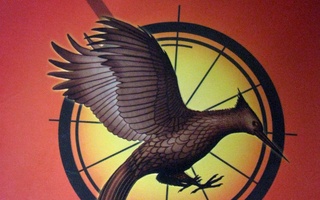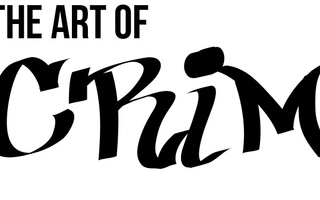
Jennifer Lawrence plays the role of Katniss Everdeen, the star of “The Hunger Games,” which premiered this past weekend and has taken the #1 grossing spot of US movies.
Congratulations, theatergoers. You’ve scored an exclusive look at the making of the hottest television show in the country! Welcome to the world of “The Hunger Games,” based on the eponymous best-seller by Suzanne Collins, in which a post-apocalyptic nation plays host to a brutal teenage death match. With Gary Ross’ relentlessly fast-paced direction, Jennifer Lawrence’s subtle portrayal of rebel hunter Katniss Everdeen, and cinematography as overwhelming and urgent as the book itself, “The Hunger Games” proves to be that rare triumph: a compelling adaptation that captures the spirit and atmosphere of its source material without sacrificing originality or pandering to its audience.
In the land of Panem, the impoverished struggle to survive while the ruling citizens bask in a utopia of endless cosmetic alterations and decadent fashions. The film opens in District 12, a hopeless landscape of poverty-stricken Appalachian coal mines. Accompanied by James Newton Howard’s mournful bluegrass score, porches creak under the stunted bodies of the district’s skin-and-bones inhabitants. For Katniss, this is home—though not for long. In punishment for a rebellion 75 years prior, the ruling Capitol requires each of its 12 oppressed districts to annually furnish a male and female tribute to fight to the death in a massive televised spectacle whose slogan is a glib “May the odds be ever in your favor.” Fiercely protective Katniss enters this lethal gladiator contest to replace her younger sister Prim (Willow Shields), who is selected in the “Reaping.”
The entire film thus becomes an exercise in tension. Taut silence breaks with sonic ringing during the competition’s opening bloodbath. Jerky hand-held cameras add realism and a strong element of claustrophobic fear to the film. The unrelenting action veers from dread to heartbreak to all-out pandemonium, which Lawrence navigates perfectly. She is a deer in headlights as she is sucked through a tube into the arena; she is a horrified and disdainful outsider as she is paraded in front of thousands of blood-lusting Capitol citizens; and she aches convincingly as she is separated from everyone she holds dear.
Ross interprets Panem through re-imagining totalitarian icons. Third Reich symbolism abounds as the two tributes are selected from the bedraggled herd of District 12 teens. Replete with an ominous blood test and a propaganda film in the style of Leni Riefenstahl, the Reaping resembles a death camp. And the Capitol’s architecture stands as a bizarre melding between the Roman Coliseum and the enormous scale of dystopic Los Angeles in “Blade Runner.”
Unlike the books, however, the burgeoning romance between Katniss and her fellow District 12 tribute Peeta (Josh Hutcherson)—all played out while her best friend Gale (Liam Hemsworth) watches—is underdeveloped and thus less devastating. In an already stuffed two-and-a-half hour adaptation, some things must inevitably fall by the wayside, yet a deeper exploration of Katniss’ ethical dilemma—to appeal to the show’s audience or maintain integrity?—would have been a powerful complement to the rebellion she inadvertently ignites across the nation. Yet Ross makes up for this shortcoming by fleshing out settings and events which occur ouside of Katniss’ limited perspective, such as the pristine technological game room where adults engineer children’s deaths, the political machinations of diabolical President Snow (Donald Sutherland), and violent riots that begin in the district of a tragically fallen tribute.
Film allows Collins’ masterful commentary on modern society to ring truer than in the book. “Are you excited? Let me hear it!” encourages the host of the spectacle, Caesar Flickerman (Stanley Tucci), to the audience’s rabid cheering. “This is the moment you never forget—when a tribute becomes a victor,” he narrates in a recap of previous Hunger Games as one teenager pummels another to death with a bloodied brick. If not for the perfectly-placed footage, he could easily be commenting on the finale of “Survivor.”
Narrative arc alone is not enough to drive this adaptation. Through its realistic character portrayals, the movie succeeds in the difficult feat of encapsulating its precursor with grace. Powerful directing and Lawrence’s perfect embodiment of Katniss ensure that the odds are ever in favor of “The Hunger Games.”
—Staff writer Leanna B. Ehrlich can be reached at lehrlich@college.harvard.edu.
Read more in Arts
Odd Future: Revolutionary or Revolting?Recommended Articles
-
COMMENTYoung Harvard, as reported in the CRIMSON, does not seem to share Miss Pankhurst's feeling that religion is the hope
-
 'The Hunger Games' Drinking Games
'The Hunger Games' Drinking Games -
The Gender-Neutral GamesThe Hunger Games largely avoids the restrictive lens of gender. Within Collins’ literary world, Katniss is characterized neither as feminine nor as feminist; she is merely a complex, humanized character.
-
 In Memoriam
In Memoriam -
The Odds Ever in Our FavorAs far as I was concerned, the freshman world was dog-eat-dog, tribute-spear-tribute. With every day came a new rush toward the Cornucopia to gather items perceived as essential to survival. Some were harder to acquire than others. Everyone could lay their hands on everyday necessities like those in Katniss’s backpack: an umbrella, a Snuggie, Advil, Adderall, condoms.
-
 Lady Killers or Killer Ladies?
Lady Killers or Killer Ladies?













